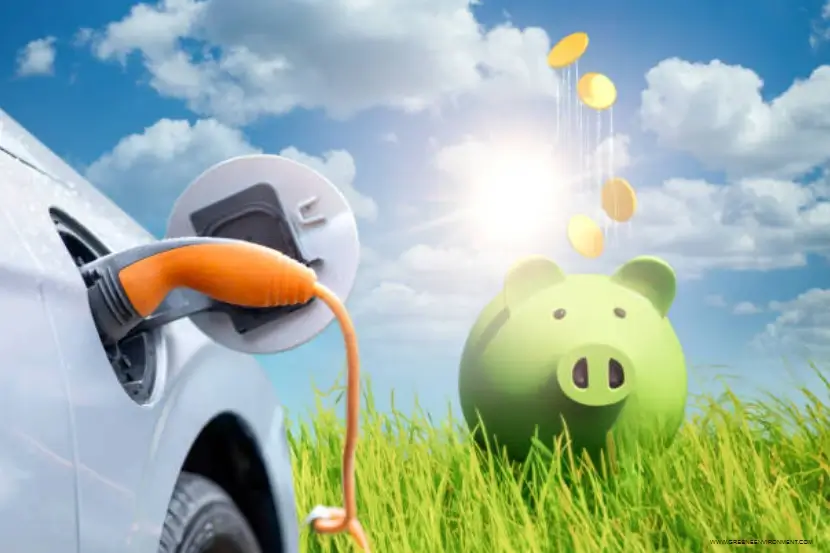Introduction: Having a sustainable lifestyle entails making appropriate choices in the way that one uses materials and energy, including limiting the waste one creates. It refers to practices that would require someone to make small alterations that easily fit in the everyday lives and practices of an individual in order to help reduce harm to the environment. There is nothing wrong with being conscious and creating a change in multiple aspects of living in order to make it more sustainable.
It may be famous to live sustainably, or it is not always necessary to wait for a revolution; everyday practices such as bag usage, water saving, or purchasing from environmentally friendly companies can also be of value.
The Importance of Reducing Your Environmental Footprint
It is necessary to decrease the impact on the environment, as resources should be conserved and environmental integrity should be maintained. Several undesirable practices, including energy wastage, pollution by plastics, and excessive use of trees, will cause climate change and loss of our natural ecosystem.
The social responsibility of every citizen requires one to make conscious decisions that will lead to the protection of the environment through recycling, the use of water, and other products that are friendly to the environment. Reasons which contribute to this conclusion include: Sustainable living also has benefits in reducing these greenhouse gases, which are notorious for increasing global warming effects.
Energy Efficiency at Home
Henry, Frank, and Greening believe that energy-efficient homes are one of the easiest and most effective ways of preserving the environment. Homes are big users of electricity, which is generated mainly from non-renewable sources. They should be able to reduce their energy bills by practicing certain measures for using electricity; this will also help to conserve energy. we can conserve energy are by replacing standard bulbs with LED bulbs ensuring the effective use of a smart thermostat, and ensuring that homes are properly insulated.
Switching to Renewable Energy Sources:
Using clean energy from natural resources such as solar, wind, and water systems is among the ways that can help in sustainability. As for the criticism of fossil fuels, renewable energy does not possess any negative feedback in terms of generating poisonous gases or exhausting resources.
Currently, all homeowners are focusing on purchasing solar panels and owning them for the generation of electricity in their own homes in order to minimize their dependence on the grid. Government and energy-providing companies also provide referrals and discounts for those who opt for green energy. Depending on renewable sources of power also reduces the emission levels while also supporting energy self-sufficiency.
Reducing Electricity Consumption:
Conservation of power regarding consumption is very important inasmuch as one is concerned with an ecological life. Some of the easy steps that we can apply in our daily lives, include switching off lights whenever a room is not in use, using energy-saving appliances, and lighting lamps and candles instead of switching on the bulb.
Smart technologies that include programmable thermostats and lights, which help control the usage of energy optimally, are some of the technologies in smart homes. On the same note, the use of electricity of high-energy appliances, including dishwashers and dryers, was also considered in attaining energy conservation.
Sustainable Transportation Choices:
Eco-minded decision-making in selecting means of transportation decreases the negative impact of human activity on the environment. One can avoid emissions by choosing cars that consume less fuel, avoiding the use of cars, and instead preferring to use public transport and avoid travelling unnecessarily. These are a few of the best methods that one should consider using when embarking on any activities that seek to improve his or her health and at the same time help in the enhancement of the environment.
The purchase of electric vehicles and employers encouraging employees to carpool also support environmentally friendly transport. Over the decades, more and more governments are promoting green transportation measures and concepts and investing in public transport, and creating programs for the purchase of EVs. One can understand that he or she has the power to some extent to improve the quality of air that surrounds us by shifting to more sustainable means of transport.
Walking, Biking, and Public Transit:
Exercise, cycling, and the use of public transport as among the best ways of cutting on fuel usage. Such means of transport reduce emissions, boost health, and decrease expenses. Cycling is one of the efficient means of transport as well as being cheap, and comes with the added benefit of exercising.
Public rides share more passengers within the same vehicle, hence easing the congestion and pollution caused by single riders. These alternatives are more appropriate than driving, especially when it comes to their impact on the natural environment and pollution of big cities. Increasing public use of transits reduces congestion on the road, and thus, efforts to make this means of transportation cheap to use.
The Benefits of Electric Vehicles

Historically, the use of electric vehicles (EVs) is very beneficial and less damaging to the environment than the use of vehicles that run on gasoline. They do not emit any pollutants into the atmosphere, thus keeping air pollution to a minimum and hardly relying on fossil fuels. Developments in battery power have enhanced the range and reduced of cost, and so they have become a convenient solution for many drivers.
Governments all over the globe factor incentives, tax credits, and rebates to consumers in order to favor the use of electric cars. The indicators are on the rise in stations, making it easier for anyone to purchase fully charged cars. To be more environmentally sustainable and at the same time be able to save a lot on fuel costs in the long run, one should consider switching to an electric vehicle.
Waste Reduction and Recycling:
It will meet the objective of reducing the amount of waste, and recycling plays a crucial in reducing the overall effects on the environment. This is especially so because the quantity of these plastics and landfills is steadily rising globally.
It is through minimizing the use of plastic products and cartridges, the Bokashi technique of handling organic waste, recycling, and proper disposal of waste that one can reduce the volume of waste produced. This is because today’s government, as well as businesses, are advocating for a culture of zero waste consumption.
Minimizing Single-Use Plastics

Plastic bags are one of the most dangerous pollutants around the world, and more specifically, single-use plastics. It takes hundreds of years to disintegrate and act as a source of marine pollution. Measures that help in cutting down plastic hangers include: carrying a bag, bottle, and straw.
Most nations have prohibited the use of plastic and embraced other forms of products, such as biodegradable products. Selecting environmentally friendly packaging decreases plastic usage and thereby the negative impact on the environment.
Effective Recycling Strategies:
To recycle, it is necessary to know what objects can be recycled and how this activity must be done. Sorting the recyclables, washing the containers, or taking other measures to ensure that the recyclables do not intermingle with other wastes enhances the efficiency in recycling.
It is common to find communities that provide some means through which individuals can sort their waste properly. Another advantage of using the sustainable perspective is that businesses can be supported to use recycled products. Proper recycling also encompasses lots of benefits as it helps maximize the use of the resources available to avoid being used and dumped carelessly.
Eco-Friendly Shopping Habits:
- Sustainable Food Choices
- Water Conservation Techniques
- Green Gardening and Landscaping
- The Role of Minimalism in Sustainable Living
- Community Involvement and Advocacy
Conclusion:
Ensuring one leads an eco-friendly life is a duty that is in the interest of every citizen and the environment. Individuals can minimize their negative impact on the planet’s environment by using energy, purchasing food, and traveling, as well as by disposing environmentally friendly waste. Cost-effective measures include using renewable energy, recycling, and avoiding wastage of water and energy serve as pointers towards a healthier and better world.
FAQs:
Q1: Issues of sustainable living encompass the following
A: Adverse impacts mean ethical values such as recycling, saving means, using green energy, and making environmentally friendly decisions on the lives of human beings.
Q2: How may I live sustainably?
A: First steps include cutting down on the use of plastics, saving water, opting for public means of transport, and being more conscious of consumption.
Q3: Is sustainable living expensive?
A: Some products are more expensive than others, especially those that are classified as sustainable; however, in the long run, such products end up saving money since one is able to save on bills and disposal costs.
Q4: What are easy ways that could be taken to reduce the level of impact of carbon?.
A: Reduce the consumption of energy by walking or cycling, using energy-efficient electrical appliances, consuming locally produced foods, and ensuring minimal wastage.
Q5: Why is sustainable living important?
A: It plays a vital role in protecting natural resources with minimum pollution and extreme conservation to support future generations.


